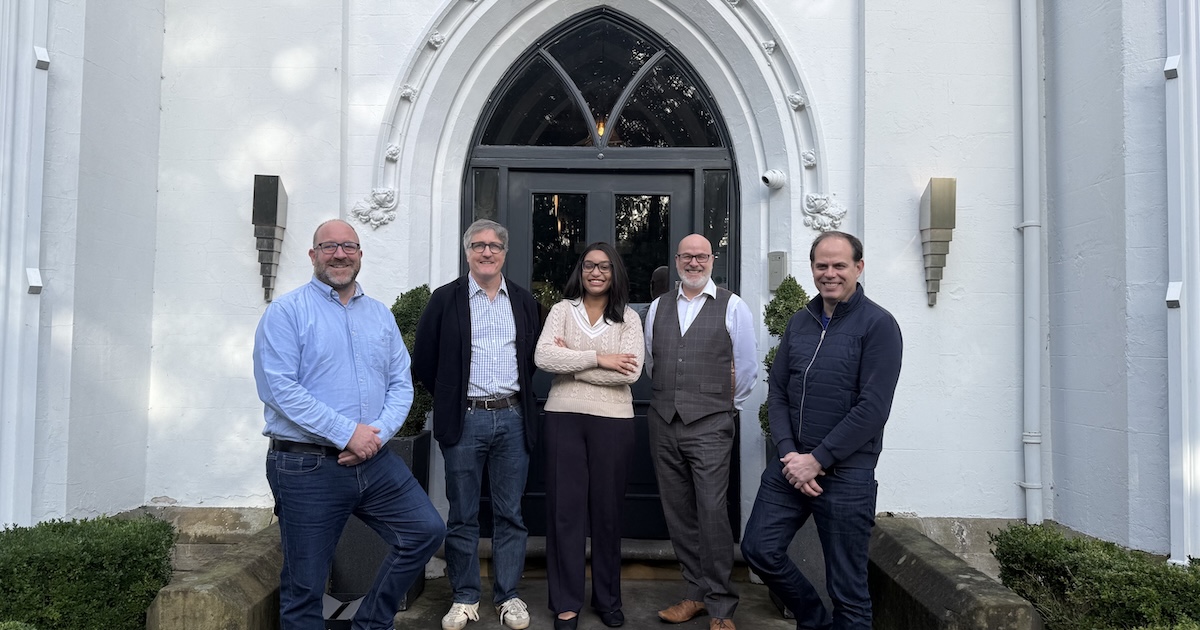Hello, it’s Andrew, Plexal CEO here, bringing you the next instalment of our Growing your business series and this week I’m talking customer acquisition.
Over the course of several weeks, I’m demonstrating our rich knowledge of tackling business problem areas by sharing personal lessons from Plexal’s scaleup journey. In reading these, you’ll also understand how our Growth Partnership service can get under the skin of what your company faces on the way to the next level and provide tailored shoulder-to-shoulder support.
Having begun our series with the importance of establishing a mission for your organisation to ensure you keep stretching forward and remember why you’re getting out of bed each morning, this leads us nicely to customer acquisition.
Now, achieving product-market fit to obtain customers is an essential element of business growth. This much is obvious. But in a world where headlines would have you believe companies achieve overnight success then secure serious investment, what isn’t obvious is how difficult this can be.
I understand. You feel your idea is bang on the money, you’ve refined it time and time again, however, your prospects feel different.
The reality is, finding that fit can be like completing a puzzle – it’s trial and error to get all the pieces in absolute alignment before you can stand back and bask in a job well done.
Don’t be deterred.
In pushing for product-market fit, it’s not enough to think in terms of your organisation and its target market – you must understand your various propositions and consider specificity for customers at each level.
Today, Plexal’s product line comprises four offerings:
(1) Workspace
(2) Innovation services
(3) Clusters
(4) Growth Partnership
Workspace was our original product and, as such, the consideration for this positioning alone was intricate. Plexal was created as an affordable coworking facility aligned to Here East’s goals – to bring long-term economic improvements to East London.
This meant considering the flexibility needed for startups, our primary customer, as well as the broader community of academia, industry and government that would also access the space.
On the infrastructure side, this meant analysing everything from 3D printers and lab environments to event space and fast Wi-Fi. On the services side, this was pricing strategies and food & beverage options.
The real need here was ensuring we delivered the appropriate tension between price and value, which is paramount for customer acquisition regardless of your business model.
In the same way our mission evolved over time, our customer acquisition approach has been reshaped as our product base grew. Fundamentally, we now inherit the objective of senior civil servants and must understand what success looks like to them.
Is it creating strategy for an innovation cluster in a specific region of the UK?
Is it delivering a programme to scaleups that will allow them to overcome growth barriers and boost the economy?
Is it encouraging innovation within a fledgling sector as the technology around it evolves at pace?
Whatever the task at hand is, it’s imperative you gain the necessary credentials that allow you to cross-sell with case studies that can take you to different marketplaces to achieve growth.
In our case, we’ve transitioned beyond cyber security programme delivery into connected places, telecoms and quantum, enabling us to sprawl into national security and defence more broadly. For perspective – just last week, Plexal’s Defence Lead, Hamza Huda, was in Tallinn with the UK’s Estonian Embassy to discuss international innovation ties.
Our customers and partners span startups, large tech companies, government, academia and corporates. This has been achievable through a relentless focus on quality across all moments.
Your customer is not an individual and neither is your brand, they’re a collection of teams and you must ensure you accurately meet the needs and wants of these people. This is also true of the geography in which you engage, as the approach can differ in locations, both in the UK and overseas.
It sounds like a lot to factor in. It is. But above all else, being humble and respectful will never go out of style, so always keep this in mind to build an army of advocates.
These advocates will serve you well when it comes to customer acquisition and diversifying your audience over time. In the case of our clusters offering, which is ultimately more focused on long-term real estate developments, we’re needing to access local authorities rather than central government. But having built trusted relationships with peers in sister organisations, this serves us well with building new ties.
I detailed previously that your mission should keep you – the leader, business and your team – focused, engaged and inspired. This mission is also what customers buy into. So, customer acquisition requires passion and commitment – organisations need to understand you’re doing things for the right reasons. Whether it’s customers, colleagues or shareholders, remember who you’re working for and why.
For example, when the founder is prioritising exit ahead of customer acquisition and the day-to-day, the organisation can head in the wrong direction.
An important tactic you can employ for customer acquisition is taking a step back to think of your business as a hunter or farmer. Both these models acquire customers, but their tactics are vastly different. While a farmer will have opportunities grow and pop up when the time is right, a hunter will be more aggressive in search of prey.
Are you a hunter or a farmer? There’s no right or wrong answer. But broadly there is a right and wrong approach for your specific organisation. Maybe you’re a hybrid, which would see calmer methods employed, with the occasional moment to be more bloodthirsty. Only you and your team, which our Growth Partnership service can be an extension of, can decide which is appropriate.
Truthfully, customer acquisition boils down to human relationships. It doesn’t matter if your solution is physical or digital, people are still fundamentally the decision makers to determine if your product fits the market. Be respectful, deliver an excellent service and listen to feedback to engage in the right way.
I’ve summarised my thoughts on mastering customer acquisition below, so if you’re ever in a hurry, you can refer to these at speed. Please let me know what you think and share your experiences with me.
- Deeply understand your product-market fit through research, experimentation, conversation and iteration
- Inherit the problem your customer has and obsess about it
- Plan your approach to market and ensure the value proposition is clear
- Understand the customer’s sector as well as they do
- Do outreach in a respectful, humble yet determined way
- When you secure your first pitch meeting, over-prepare and be ready to wow them
- Listen to feedback and act accordingly
- Deliver your first customer solution in a way that will compel them to buy again and recommend to others
- Build your pipeline and diversify where opportunities arise
As I said, I’ll be bringing you regular updates on the Plexal growth journey over the coming weeks, so stay tuned for more insights and, hopefully, inspiration.
And if you want support to your next growth milestone – we’re just an email away and ready to work with you: https://www.plexal.com/growth/


